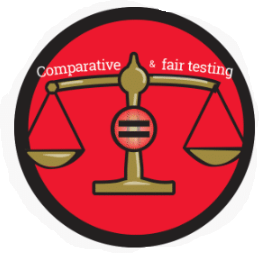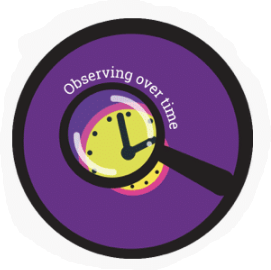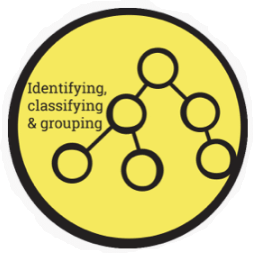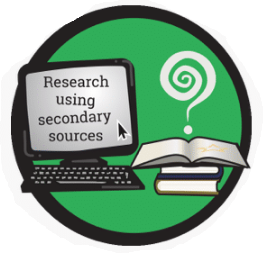Science
At Grimsdyke Primary School, we believe that science underpins a thirst for knowledge and understanding of how and why the natural and physical world works, including being equipped with the skills to hypothesise, question and enquire in methodical and systematic way, drawing conclusions and being able to communicate these effectively whilst being analytical and critical in their reflection on the explanations of others. The need to develop inquisitive, young scientists is at the forefront of how we teach science. The curriculum itself is designed to be progressive in nature, allowing children to develop their learning as they move through the school. The broad and balanced nature of the subject ensures that all children are able to access the learning and leave the school in Year 6 with the skills necessary to continue developing this further.
Investigations are planned with the children’s curiosity in mind whilst also meeting the ‘Working Scientifically’ aspects of the National Curriculum. Children are given the experience of scientific processes, and practical scientific skills to develop their scientific thinking and reasoning. Our yearly ‘Science Week’ event heightens the profile of science within the school and encourages our community to come together in the celebration of the subject. Science has driven forward many successes in society and as such, the acquisition of high quality science skills fuels our hope that one day, the children of Grimsdyke may contribute to further advancements in science.
|
SCIENTIFIC SKILL |
EXPLANATION |
|
|
What makes it a fair test? Pupils identify the effect of changing one variable on another whilst attempting to keep other variables constant. The variable which has been changed is called an independent variable and how it affects something else is called a dependent variable. The controlled variables are quantities/items that you want to remain constant. With fair tests pupils look to identify a causal relationship between two variables. Fair testing could help you to answer questions like: Does the size of the parachute affect the speed it falls to the ground? How does voltage affect the brightness of a lamp? How does the amount of salt added to water affect the temperature that it freezes? |
|
|
Children watch something happen over time. Plants grow, shadows move and trees change as the seasons pass but it is important to remember that this can be done over ANY amount of time. Dropping a ball, putting raisins in fizzy pop or mixing salt in to hot water: these observations can take place over seconds, hours, days or even months. Observing over time could help you to answer questions like: How do the colour of leaves change through the seasons? How does the volume of water in a container on the windowsill change with time? How does the Moon appear to change over a month? |
|
|
The official definition of classification is to arrange something in categories according to shared qualities or characteristics. Effectively, putting things in to groups or sorting them. Children could be asked how they would sort ‘things’ and why or could be challenged to sort things in a specific way. Children could just divide into groups, Venn diagrams could be used or even flow charts. Identifying, classifying and grouping could help you to answer questions like: How are the trees in the local park the same or different? How can we group the food that we eat? Which species of trees are growing in the local park? Which materials are magnetic and which are not? Can we use an identification key to name the rocks in our collection? How can we group the invertebrates we have identified on the school grounds? |
|
|
This enquiry looks at using a range of secondary sources (books, websites, articles, scientists' research, videos etc.) to gather evidence to answer questions and uncover information that will further children’s knowledge and understanding. They look for patterns in the information they collect, evaluating the reliability and trustworthiness of the evidence they collect when drawing conclusions. Research using secondary sources could help you to answer questions like: How have some animals adapted to live in water? Which species of animals live in Africa, and how do they compare to the animals native to the UK? How have our ideas about the Solar System changed over time? Are microorganisms always harmful? What are microplastics and why are they harming the planet? |
|
|
In this type of enquiry children are trying to answer questions by finding patterns in the measurements and observations they make where there are variables that they can’t easily control. They seek to identify patterns in the measurements, which may lead to other investigations in an effort to try to explain why a particular pattern occurred. Pattern seeking could help you to answer questions like: Do bigger ice cubes take longer to melt? Is there a pattern where we find volcanoes on earth? What colour flowers do bees prefer? How much does your heart rate change when you do different exercises? Do all stretchy materials stretch in the same way? This is a great enquiry type to develop measuring and recording skills with a little bit more flexibility than a fair test. |
Below is an overview of the topics covered within each year group and how science curriculum has been designed to ensure progression in knowledge and skills. A curriculum map for each year group is available on each year group's page where further details of each unit is outlined in further detail.
|
|
Autumn 1 |
Autumn 2 |
Spring 1 |
Spring 2 |
Summer 1 |
Summer 2 |
|
Seasonal Changes (Autumn) Animals including humans (My environment) |
Everyday Materials (different materials) |
Seasonal Changes (Winter) |
Plants (plants and flowers) |
Seasonal Changes (Spring) Lifecycles |
Seasonal Changes (Summer) Animals including humans (My body) |
|
|
Seasonal Changes (Autumn) |
Everyday Materials |
Seasonal Changes (Winter) |
Seasonal Changes (Spring) Plants |
Animals including humans |
Seasonal Changes (Summer) |
|
|
Uses of everyday materials |
Uses of everyday materials |
Living things and their habitats |
Plants |
Animals, including humans |
|
|
|
Rocks |
Animals, including humans |
Light |
Forces and Magnets |
Plants |
|
|
|
Living things and their habitats |
Animals, including humans |
States of matter |
Electricity |
Sound |
Sound |
|
|
The Properties and Changes of Materials |
Forces |
Earth and Space |
Earth and Space |
Living Things and their Habitats |
Animals (Including Humans) |
|
|
|
Animals, including humans |
Light |
Evolution and Inheritance |
Evolution and Inheritance |
Living Things and their Habitats |
Electricity |








